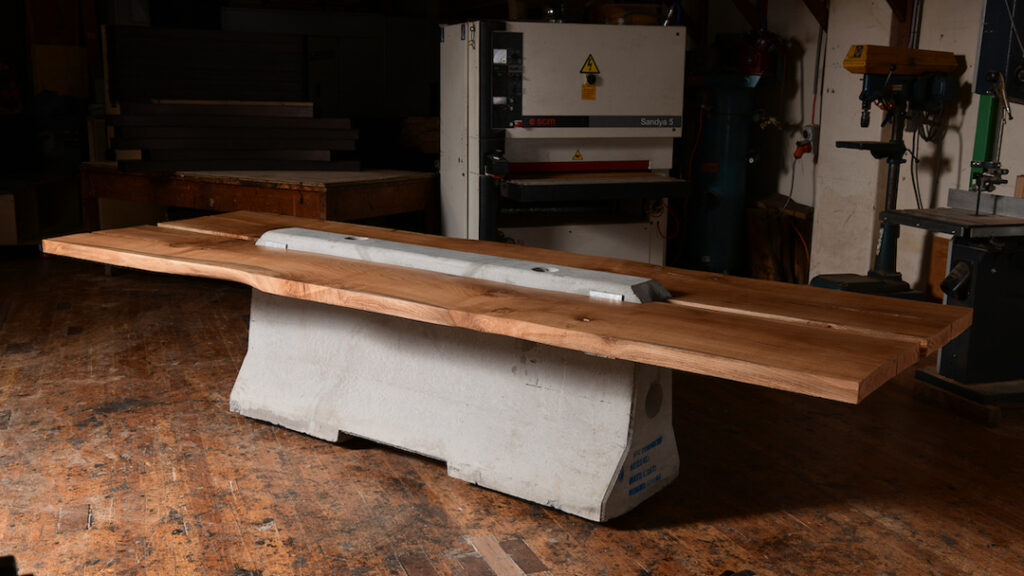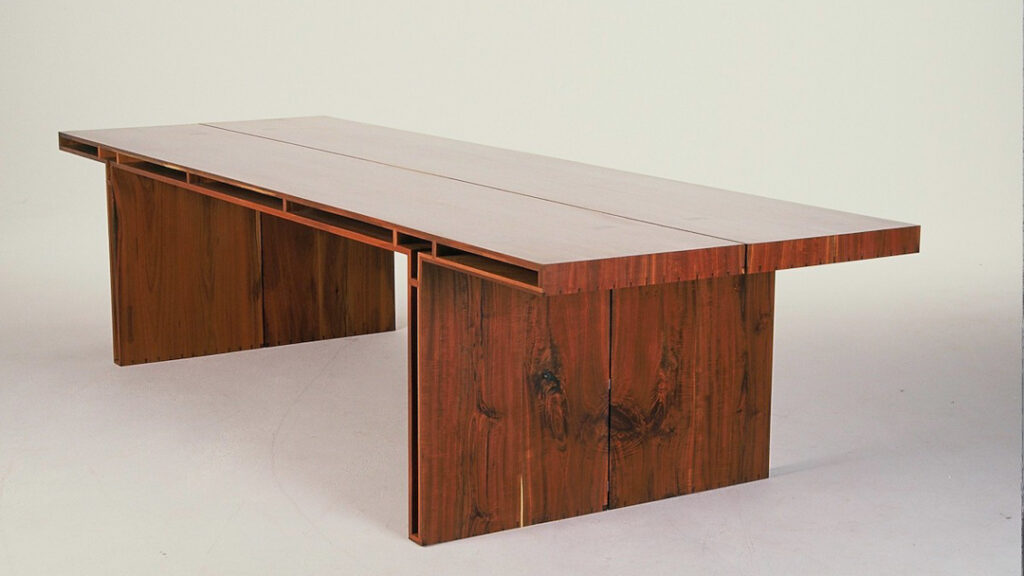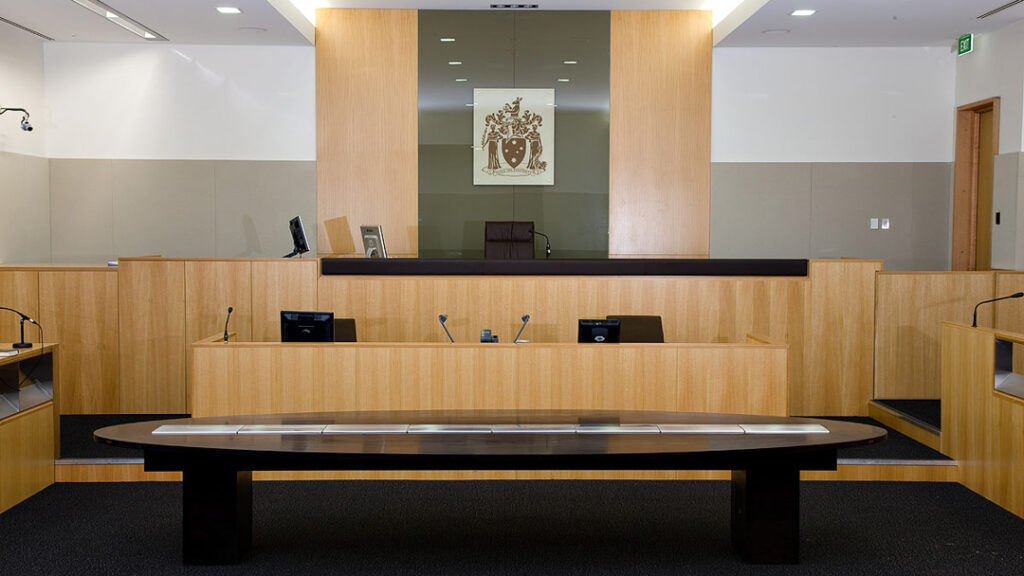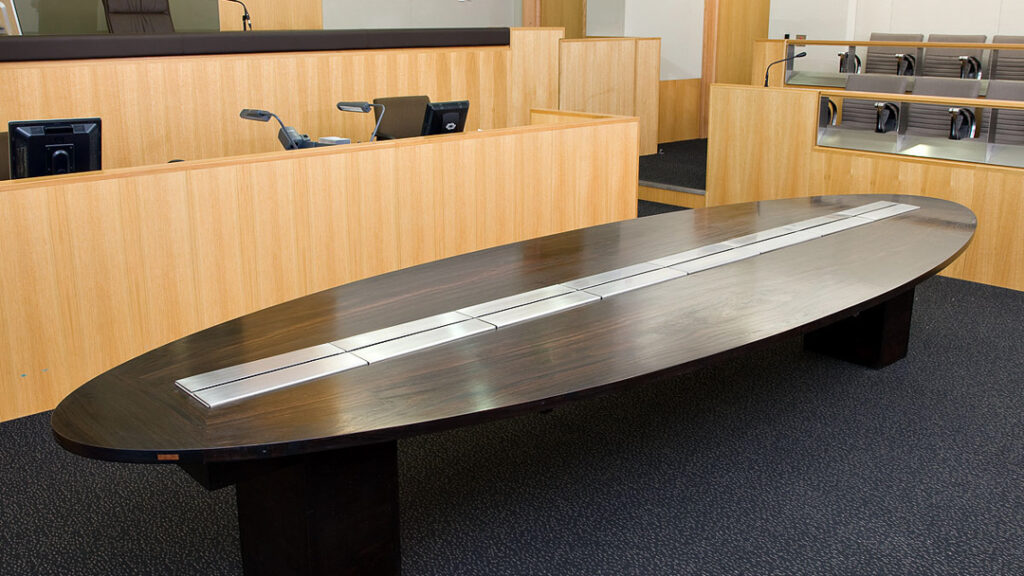Damien Wright presents six tables as material platforms for how we can do politics.
We’ve looked down through the fog of war to the kitchen table of the average Australian family. To those who sit around it, we’ve listened to their hopes and their dreams… Their love of the future of this nation, the determination they have to see it as a constructive and creative nation…
Kim Beazley’s federal election concession speech, 10 November 2021.
An election was fought six and a half weeks after the Tampa affair. And a month after the collapse of the World Trade Center NYC, at the red-hot start of the “War on Terror”.
John Howard had successfully opened the Pandora’s box of racism and xenophobia for Australians and prosecuted a brilliant electoral victory with his narcotic hits: “We decide who comes into this country and the circumstances in which they come.”, “queue-jumpers”, “floodgates” etc.
Beazley was never going to win. His job was to save the furniture. To hold the dark soul of Australia and guide it to the light and lose.
To do this he placed us at the table. A place where we live our lives. A place of story, of tears, of love, hope and heartbreak.
The table as metaphor. As connective tissue. As a site of political, social and creative contest.
Control (2021)
Cast concrete Jersey barrier and recovered English oak. I made this piece in the Covid lockdown. It is about social and environmental control. The Jersey barrier is designed and made to stop a vehicle crossing into oncoming traffic. There are millions of them. We accept their brutal dictation.
The English oak is salvaged from a garden in Mt Dandenong. The garden was part of the Acclimatisation movement that aggressively sought to recreate an English landscape in Australia: terraforming as social control.
Chief’s Conference Table (2002)
Conference table for the chambers of the Chief Justices of the Federal Court Australia. Gidgee is one of the hardest timbers on earth. It grows in desert uplands of western NSW and Qld. This table is a conversation about transparency. The whole thing is a torsion box. Its structural integrity is not from mass or volume but from tension.
Bar Table, Koori County Court (2009)
- Bar Table Koori County Court, 2009, Ancient Red Gum, photographer: Jeremy Dillon
- Bar Table Koori County Court, 2009, Ancient Red Gum, photographer: Jeremy Dillon
Bar table, Koori County Court, Morwell, is made from 10,000-year-old ancient red gum. The Koori County court was the first of its kind in Victoria. It works on a community restorative justice model. I designed and made this table from one tree salvaged from a road rock mine in Wodonga. It speaks to the complexity of law and justice in a deep time country.
Jack Dining Table (2023)
Dining table in American Oak. This is my favourite photo of my work. It captures the beauty and melancholy of this maker’s life. This table is a response to landscape: to the stacked layered escarpments of this ancient land. The animation of stone written into timber.
Ma Table (2022)
Ma table cast epoxy and 10,000-year-old ancient red gum. This table is an adventure into material dissonance. Both materials are products of mining. Both require vast human effort and interference. I like the tension of this table.
Brief Writing Desk (2010)
The Brief Writing desk is an exercise in craft mania. Thick veneer 10,000-year-old ancient red gum torsion box. Secret drawers, gidgee legs. Australian timbers. Red gum has not been considered “select”, “valuable”, “beautiful”, or “fine” enough to use as a veneer. The design language and intention of a great deal of red gum timber furniture is to suggest a lack of refinement. A lack of value. veneering is what you do with timber that you truly value. Culturally, financially, artistically.
The intent of the work is to say that this deep-time timber can be used in the most refined, respectful and sophisticated way. A reference point for this thinking is the Prime Minister’s Office in the ‘New’ Parliament House. The office is lined in Huon pine and Tiger Myrtle panelling: hand-made veneer by craftsman Kevin Perkins. Those timbers sit within the cannon of fine woodwork. They are temperate rainforest timbers. We exported them as fine timbers. We made sleepers, fence posts, stumps, fuelled paddle steamers and burnt red gum.
What I seek to do is challenge the contemporary colonial craft and design hierarchy. Making ancient red gum the expression of design and craft intent. Of our desire and ability to use the most “difficult” timber in the most sublime way.
Manymak djama (Good work, 2010)
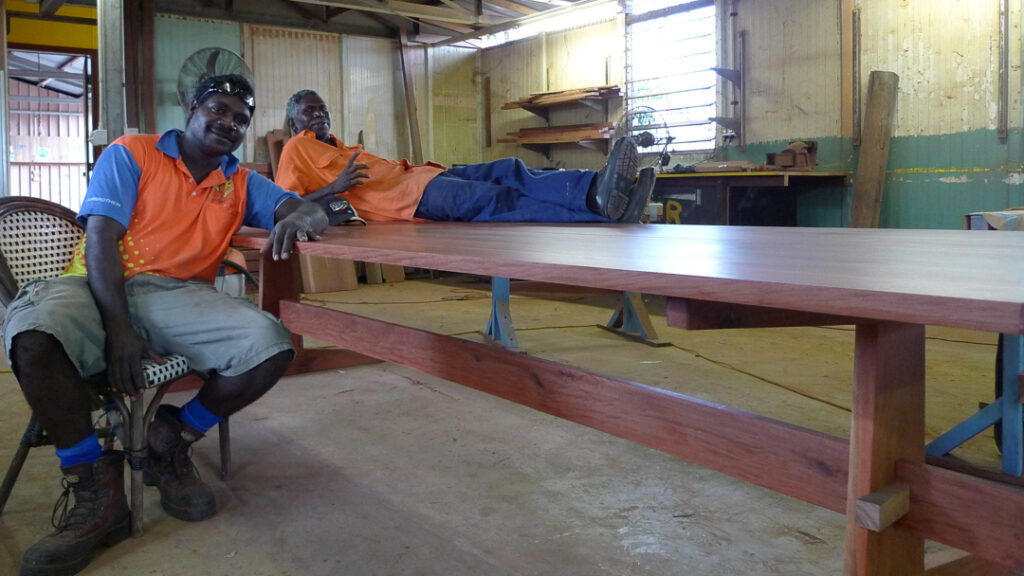
This is the Dhimurru ranger organisation board table made from Gadayka. Bonhula Yunupingu, Djalung Yunupingu, Mr Gurruwiwi, Tony Mumungurr designed and I made this table in the build-up of 2010 at Gunyangara Nth East Arnhem land. An incredible adventure in cross-cultural collaboration. This was the last piece Bonhula and I did before my family and I moved back to Melbourne.
Gadayka is not considered a furniture timber. The Gumatj clan invited me to collaborate on developing a furniture studio, called Dharpa Drama Studio. (Wood work studio). We made tables, chairs, beds and this board table.
About Damien Wright
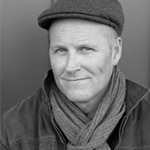
Damien Wright is an award-winning furniture designer and craftsman with over 30 years of experience. Damien has contributed cultural artefacts to Australian intuitions of law, politics, art and culture. At the heart of each and every design is an investigation into materials. Damien works with his hands to understand how Australian timbers reveal stories about place, time, colonisation and belonging. He uses timbers that are not traditionally employed to make furniture, such as eucalyptus, desert timbers and 10,000 Ancient red gum. Since 2010 Damien has collaborated with Yolngu man Bonhula Yunupingu on their Bala Ga’ Lili (Two ways learning) project. Bala Ga’ Lili comprises a collection of timber sculptures that visually represent the tension inherent in First Nations and Settler Colonial relationships. The pair have created a new language that sits outside of settler domination or traditional and sacred practice. Damien’s public commissions include the Federal Court of Australia, the National Gallery of Victoria, the Melbourne Immigration Museum, Federation Square Management offices, the Koori County Court of Victoria and the Archdiocese of Broken Bay. Damien Wright is in the permanent collection of the National Gallery Canberra, Powerhouse Museum and National Gallery Victoria. Damien is represented by Gallery Sally Dan-Cuthbert in Sydney. Wright Studios is located in Northcote, Victoria. Visit www.wrightstudios.com.au and follow @damienwrightstudios/

